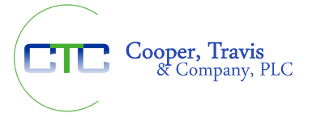Tag: Transition Package Election
Leases – Part Five
Five Areas Where It’s Easy to Stump Your Toe
ASC 842 is in full swing now. Most private companies and CPA firms have been in the weeds for some time. It would be an understatement to say the standard is massive and not entirely transparent. Because ASC 842 is principle-based and yet very specific in certain areas, it’s far too easy to make implementation errors. In no particular order, here are my top five areas prone to mistakes.
- Misunderstanding the Effective Date for Interim Financial Statements. The effective date for private companies and private not-for-profit entities is fiscal years beginning after December 15, 2021. This includes all annual financial statements with dates that begin in 2022. However, it does not include interim periods that begin in 2022. For example, a company that prepares interim financial statements for May 1, 2022, through October 31, 2022, would account for leases under ASC 840 unless the company implements ASC 842 early. This is because the FASB set the effective date for interim financial statements for a year later, i.e., interim periods beginning after December 15, 2022.
- Not Giving Sufficient Thought to Elections. The standard is replete with various elections that can significantly affect the complexity and results of lease accounting. These elections include:
- Short-term lease. This is a very beneficial election made at the class level to not apply the lease standard to leases of twelve months or less.
- Nonlease components. This is an election, made at the class level, to combine lease and non-lease components as a single lease component. This election can significantly reduce the complexity of accounting but may increase the lease liability.
- Discount rate. This is an election, made at the class level, to use the risk-free rate to measure the lease liability. This election reduces complexity but will generally increase the lease liability.
- Classification Criteria. One classification criterion is determining if the lease term is a major part of the underlying asset’s economic life. A policy election may be made to define major part as 75%. Another classification criterion is determining if the lease payments’ present value is substantially all of the fair value of the underlying asset. An election can be made to define substantially all as 90%.
These elections bring back the bright-line rules under ASC 840. The good thing about these elections is that they provide a bright line. But the bad thing about these elections is that the decision is made using bright lines instead of professional judgment.
- Transition Package Election. Transition relief must be elected as a package that streamlines and simplifies the transition of leases under the old standard to ASC 842.
- Embedded Leases. Are you familiar with the Shakespearian expression “beware the Ides of March”? Well, beware of embedded leases. They can hide in service contracts, subcontracts, and who knows where? Even though not described as such, they are leases in sheep’s clothing that must be carved out and accounted for as leases under ASC 842. Think in terms of significant underlying assets, like cranes and scaffolding.
- Reasonably Certain. What is reasonably certain? This one is hard to tie up into a nice pretty bow. Even though the concept of reasonably certain is critical under the standard, it is not defined in ASC 842.
In which areas does the concept of reasonably certain become important?
- Options to extend the lease term
- Options to purchase the underlying asset
- Options to terminate the lease
- Lease classification (finance or operating)
- Short-term lease election
- Lease liabilities measurement
- Lease ROU asset measurement
- ROU Asset Life. It’s far too easy to stump your toe in this area and, therefore, really mess up the ROU amortization. The ROU asset life is usually the same as the lease term. “ROU asset life equals the lease term” can become automatic to us. After all, this is lease accounting. However, suppose you have a finance lease that transfers ownership or is almost certain to transfer ownership of the underlying asset to the lessee. In that case, the ROU asset’s life is the useful life of the underlying asset (not the lease term.)
ASC 842-20-35-8 states the following:
A lessee shall amortize the right-of-use asset from the commencement date to the earlier of the end of the useful life of the right-of-use asset or the end of the lease term. However, if the lease transfers ownership of the underlying asset to the lessee or the lessee is reasonably certain to exercise an option to purchase the underlying asset, the lessee shall amortize the right-of-use asset to the end of the useful life of the underlying asset.
As can be seen, the concept impacts several essential areas. Even though important, there are no bright lines. Some commentators have suggested that reasonably certain is 75% or better certainty. Others have suggested that it is “almost certain.” One thing is certain, though. The certainty rests in the minds of the company’s decision-makers. It will take sound professional judgment to ascertain the degree of reasonableness.



